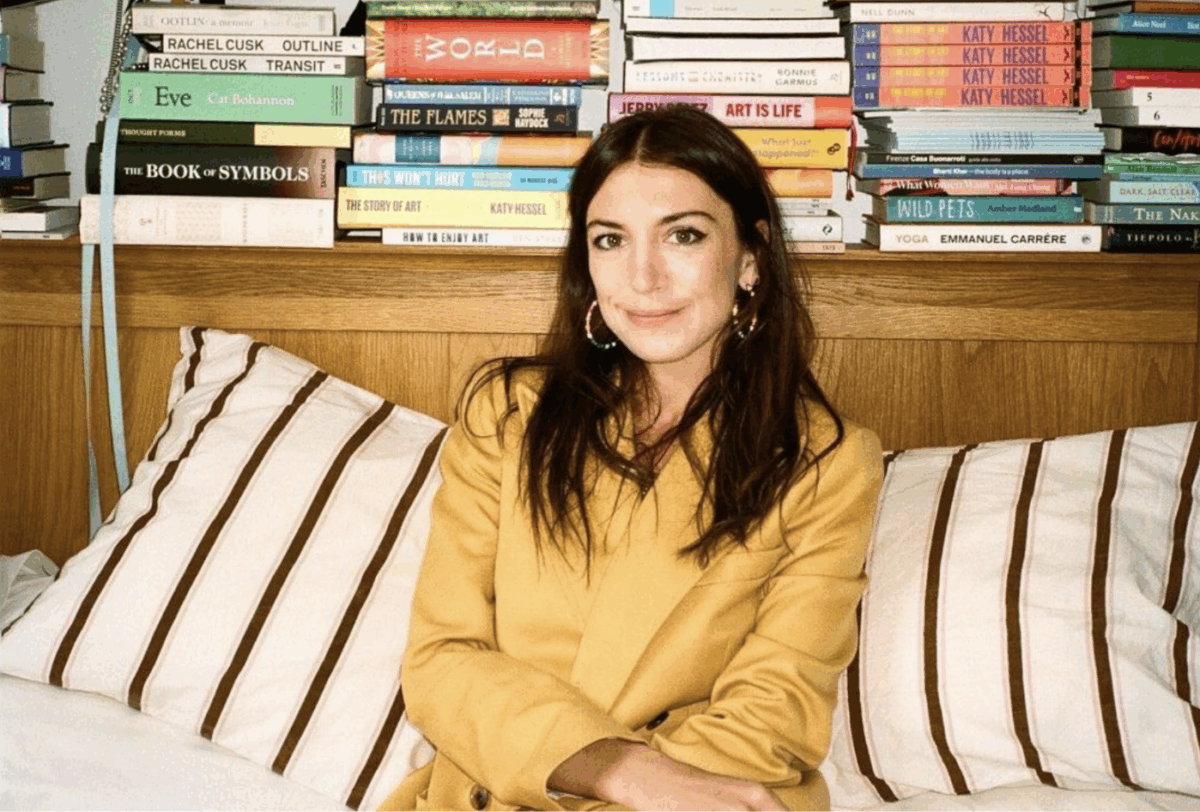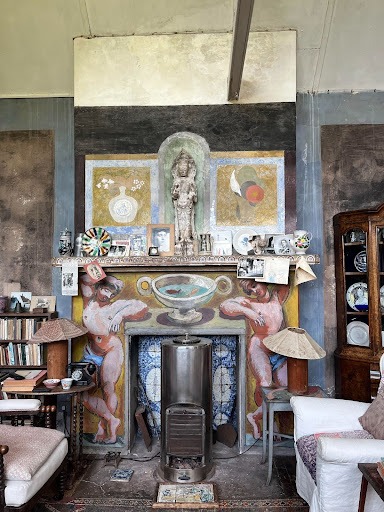By Lydia Firth
In March, I was fortunate enough to catch Katy Hessel for a chat. If you’re not familiar with Hessel she is an art historian, Guardian columnist and curator, known for authoring The Story of Art Without Men and running the Instagram account and podcast The Great Women Artists. The Story of Art Without Men does exactly what it says on the tin: Hessel leads us through the history of art from the 1500s to 2020s exclusively from the perspective of women artists. The book takes its name from E H Gombrich’s canonical text, The Story of Art, which included absolutely no women when first published in 1950, and now, in its 16th edition, compensates for its erasure of female artists by including just one. Hessel’s antidote to this exclusionary tale is an invaluable compendium; an essential contribution to the art history canon.
A Sunday Times and New York Times ‘Bestseller’, a Trustee at Charleston Trust, an alumna of Forbes 30 under 30, I’d go as far as to say she defines the art history zeitgeist. Her dedication to educating others about female artists is demonstrated by her willingness to speak to me, the humble undergraduate, albeit over the phone as she dashes about the streets of London to buy a pancake pan to host some friends (it was Shrove Tuesday, after all).
In The Story of Art Without Men, Hessel’s zeal for art is clear. I ask her how she first got into art. Growing up in London, she benefited from the various free galleries, visiting on Saturday afternoons with her sister. She recalls the Tate Modern opening when she was six: being in awe of Louise Bourgeois’ spider sculpture, Maman, and the expansive turbine hall, ‘how could you not be entranced by that’ as a child she questions. Going on to study art, the extent of the sidelining of women artists only dawned on her aged 21, when visiting an art fair and realising, out of the thousands of artworks before her, not a single one was by a woman. She asked herself whether she could name twenty women artists, ten pre-1950, any pre-1850. Despite her degree in art history, the answer was no. She tells me, ‘it’s not like these women didn’t exist. They existed, and they were incredible… you’re just actually missing out on having really interesting conversations about really interesting artworks.’ She hopes the book acts as an entry point into art history, the kind of book ‘on the first floor of the bookshop, that sort of made art mainstream’. Having received my copy for Christmas, purchased by my parents from Waterstones first floor (it was their book of the year in 2022), she has managed to do exactly that.
Without The Story of Art Without Men, both myself and many others wouldn’t be familiar with the dazzling concentric paintings of Hilma Af Klint who produced some of the first major abstract works, before the likes of Kandinsky and Mondrian; the psychologically acute portraits of Alice Neel; the 18th century pioneer Angelica Kauffman. I tell her there are now art enthusiasts who may be more clued up on women artists than men. She says there’s a David Caspar Friedrich show at The Met which she might have to give a chance: we jokingly share a moment of misandry. I lament Durham not offering a degree in art history and Hessel suggests ‘there’s much more hunger’ for the discipline than ‘institutions actually have food for’. As a humanities student who has mourned the crumbling arts and humanities building juxtaposed against sparkly new facades of business schools and STEM buildings, these words resonate.
I urge you to check out Hessel’s work: her podcast guests have included the likes of Tracey Emin and Marina Abramović. Ali Smith claims ‘her retake on the canon has changed it forever’: Katy Hessel is quite literally at the forefront of the art world, and changing the game with her passionate and palatable positive discrimination.





